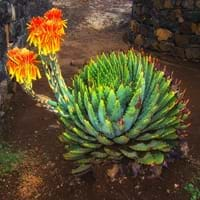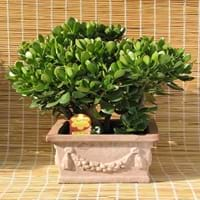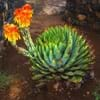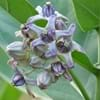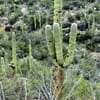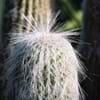Life Span
Perennial
Perennial
Type
Cactus or Succulent
Cactus or Succulent
Origin
Canary Islands, Southern Africa, Madagascar
Southern Africa, Madagascar, Asia
Types
Not Available
Crassula
Habitat
Cold Regions, Dry areas, Rocky areas
Dry areas, Hillside, Semi arid regions, Semi desert
USDA Hardiness Zone
10-15
11-12
Sunset Zone
8, 9, 12, 13, 14, 15, 16, 17, 18, 19, 20, 21, 22, 23, 24
Not Available
Habit
Rosette/Stemless
Clump-Forming
Minimum Height
Not Available
Minimum Width
Not Available
Flower Color
Yellow, Orange, Pink, Coral
White, Pink, Magenta
Flower Color Modifier
Not Available
Not Available
Fruit Color
Green
Non Fruiting Plant
Leaf Color in Spring
Light Green, Blue Green, Dark Green
Light Green, Blue Green, Gray Green, Dark Green
Leaf Color in Summer
Green, Blue Green, Dark Green, Pink, Rose
Light Green, Blue Green, Gray Green, Dark Green
Leaf Color in Fall
Light Green, Blue Green, Dark Green
Light Green, Blue Green, Gray Green, Dark Green
Leaf Color in Winter
Light Green, Blue Green, Dark Green
Light Green, Blue Green, Gray Green, Dark Green
Leaf Shape
Rosette
Succulent
Plant Season
Spring, Summer, Fall, Winter
Spring, Summer, Fall, Winter
Sunlight
Full Sun, Partial Sun
Full Sun, Partial Sun
Growth Rate
Medium
Medium
Type of Soil
Loam, Sand
Loam, Sand
The pH of Soil
Acidic, Neutral, Alkaline
Neutral, Alkaline
Soil Drainage
Well drained
Well drained
Bloom Time
Spring, Summer
Indeterminate
Tolerances
Drought
Cold climate, Dry soil, Heat Tolerance
Where to Plant?
Ground
Container, Ground, Pot
How to Plant?
Cuttings, Stem Cutting
Leaf Cutting, Stem Planting
Plant Maintenance
Medium
Medium
Watering Requirements
Allow soil to be completely dry in between waterings, Needs very little water
Do Not over Water, Do not water frequently, Does not require lot of watering, Keep ground moist, Medium, Never Over-water, Water when top layer of soil becomes dry
In Summer
Lots of watering
Lots of watering
In Spring
Moderate
Moderate
In Winter
Average Water
Average Water
Soil pH
Acidic, Neutral, Alkaline
Neutral, Alkaline
Soil Type
Loam, Sand
Loam, Sand
Soil Drainage Capacity
Well drained
Well drained
Sun Exposure
Full Sun, Partial Sun
Full Sun, Partial Sun
Pruning
Remove damaged leaves, Remove dead branches, Remove dead leaves
Prune if you want to improve plant shape, Remove damaged leaves, Remove dead leaves
Fertilizers
All-Purpose Liquid Fertilizer
All-Purpose Liquid Fertilizer, fertilize in spring, Nitrogen, Phosphorous, Potassium, Put diluted fertilizers, Water soluble fertilizers
Pests and Diseases
Red blotch
Mealybugs, Red blotch, Scale, Spider mites
Plant Tolerance
Drought
Cold climate, Dry soil, Sun
Flower Petal Number
Single
Single
Foliage Texture
Bold
Bold
Foliage Sheen
Matte
Matte
Attracts
Hummingbirds
Butterflies
Allergy
Not Available
no allergic reactions
Aesthetic Uses
Decorating walls, Ground Cover, Hanging Basket, Mixed Border
Beautification, Landscape Designing, Showy Purposes
Beauty Benefits
Not Available
Not Available
Environmental Uses
Air purification
Air purification, Food for insects, Indoor Air Purification, Very little waste
Medicinal Uses
Not Available
Vomiting
Part of Plant Used
Not Available
Leaves
Other Uses
Not Available
Decoration Purposes, Showy Purposes, Used as Ornamental plant, Used for its medicinal properties
Used As Indoor Plant
No
Yes
Used As Outdoor Plant
Yes
Yes
Garden Design
Container, Feature Plant, Groundcover, Hanging Basket, Rock Garden, Wall
Container, Houseplant, Mixed Border, Rock Garden, Wall
Botanical Name
ALOE polyphylla
CRASSULA
Common Name
kroonaalwyn
lekhala kharetsa
spiral aloe
Jade Plant, Lucky Plant, Money Tree
In Hindi
spiral aloe
जेड पौधा
In German
Spirale Aloe
Geldbaum
In French
aloe spirale
Crassula ovata
In Spanish
espiral de aloe
Crassula ovata
In Greek
σπιράλ αλόη
crassula ovata
In Portuguese
aloe espiral
crassula ovata
In Polish
spirala aloesu
Crassula ovata
In Latin
Aloe spiralis
Crassula ovata
Phylum
Tracheophyta
Magnoliophyta
Class
Magnoliopsida
Magnoliopsida
Order
Asparagales
Saxifragales
Family
Aloaceae
Crassulaceae
Clade
Angiosperms, Monocots
Angiosperms, Core eudicots, Eudicots
Tribe
Not Available
Not Available
Subfamily
Asphodeloideae
Crassuloideae
Number of Species
Not Available
Importance of Spiral Aloe and Crassula Ovata
Want to have the most appropriate plant for your garden? You might want to know the importance of Spiral Aloe and Crassula Ovata. Basically, these two plants vary in many aspects. Compare Spiral Aloe and Crassula Ovata as they differ in many characteristics such as their life, care, benefits, facts, etc. Every gardener must at least have the slightest clue about the plants he wants to plant in his garden. Compare their benefits, which differ in many ways like facts and uses. The medicinal use of Spiral Aloe is Not Available whereas of Crassula Ovata is Vomiting. Spiral Aloe has beauty benefits as follows: Not Available while Crassula Ovata has beauty benefits as follows: Not Available.
Compare Facts of Spiral Aloe vs Crassula Ovata
How to choose the best garden plant for your garden depending upon its facts? Here garden plant comparison will help you to solve this query. Compare the facts of Spiral Aloe vs Crassula Ovata and know which one to choose. As garden plants have benefits and other uses, allergy is also a major drawback of plants for some people. Allergic reactions of Spiral Aloe are Not Available whereas of Crassula Ovata have no allergic reactions respectively. Having a fruit bearing plant in your garden can be a plus point of your garden. Spiral Aloe has no showy fruits and Crassula Ovata has no showy fruits. Also Spiral Aloe is not flowering and Crassula Ovata is not flowering . You can compare Spiral Aloe and Crassula Ovata facts and facts of other plants too.
